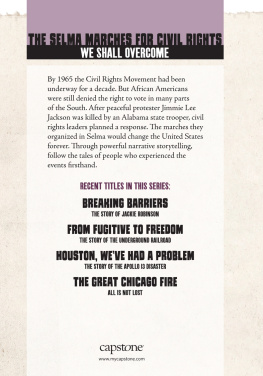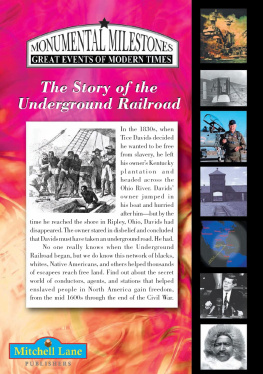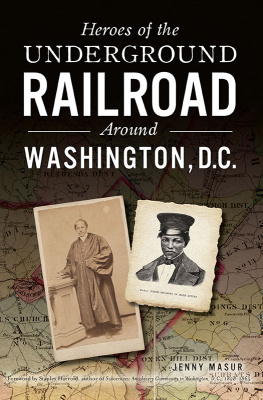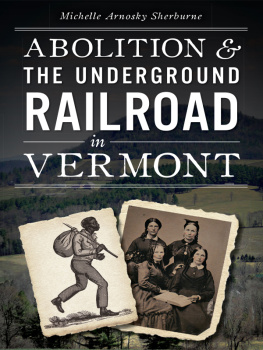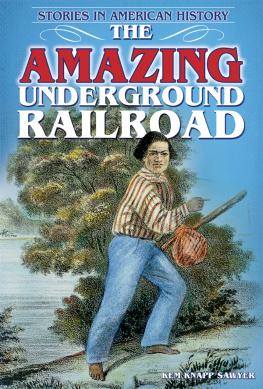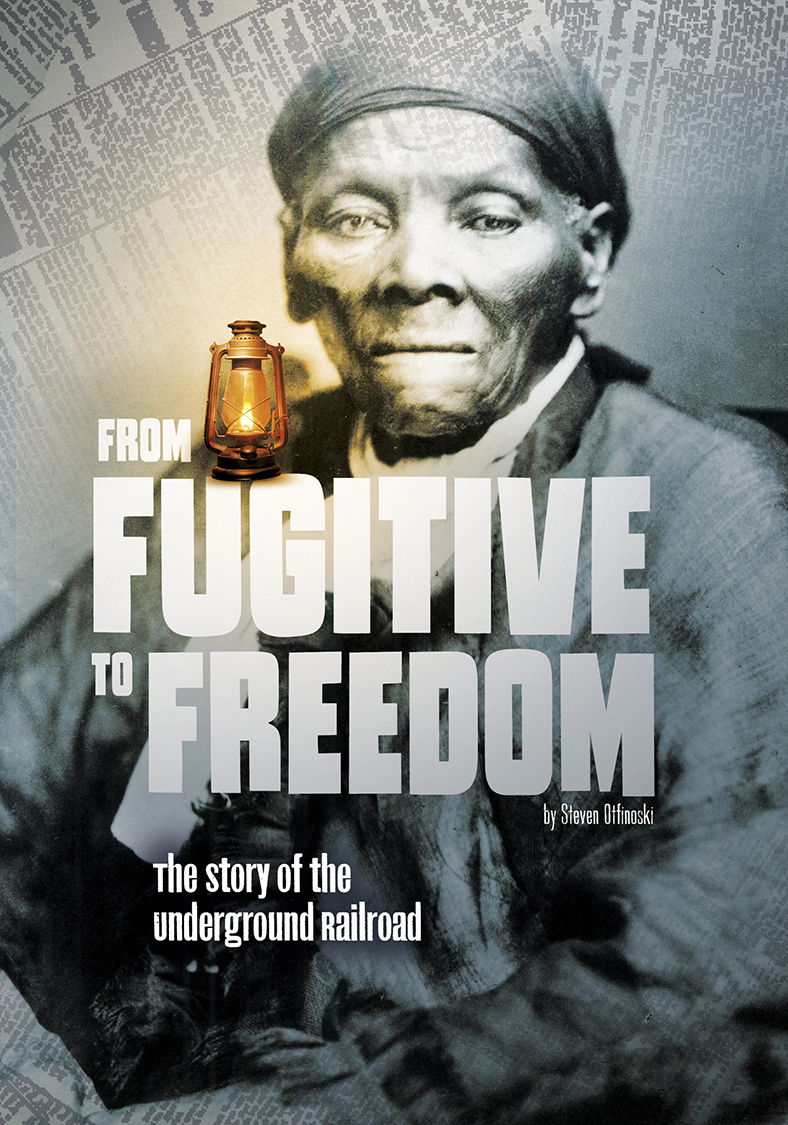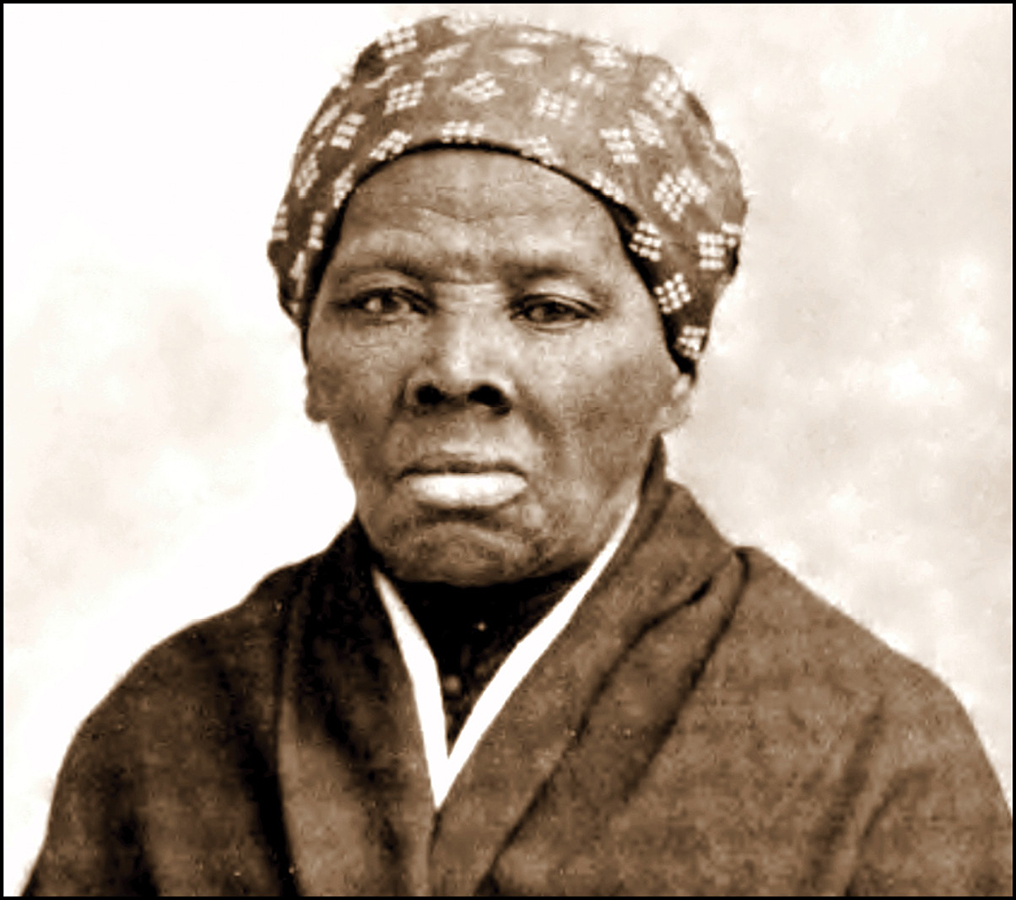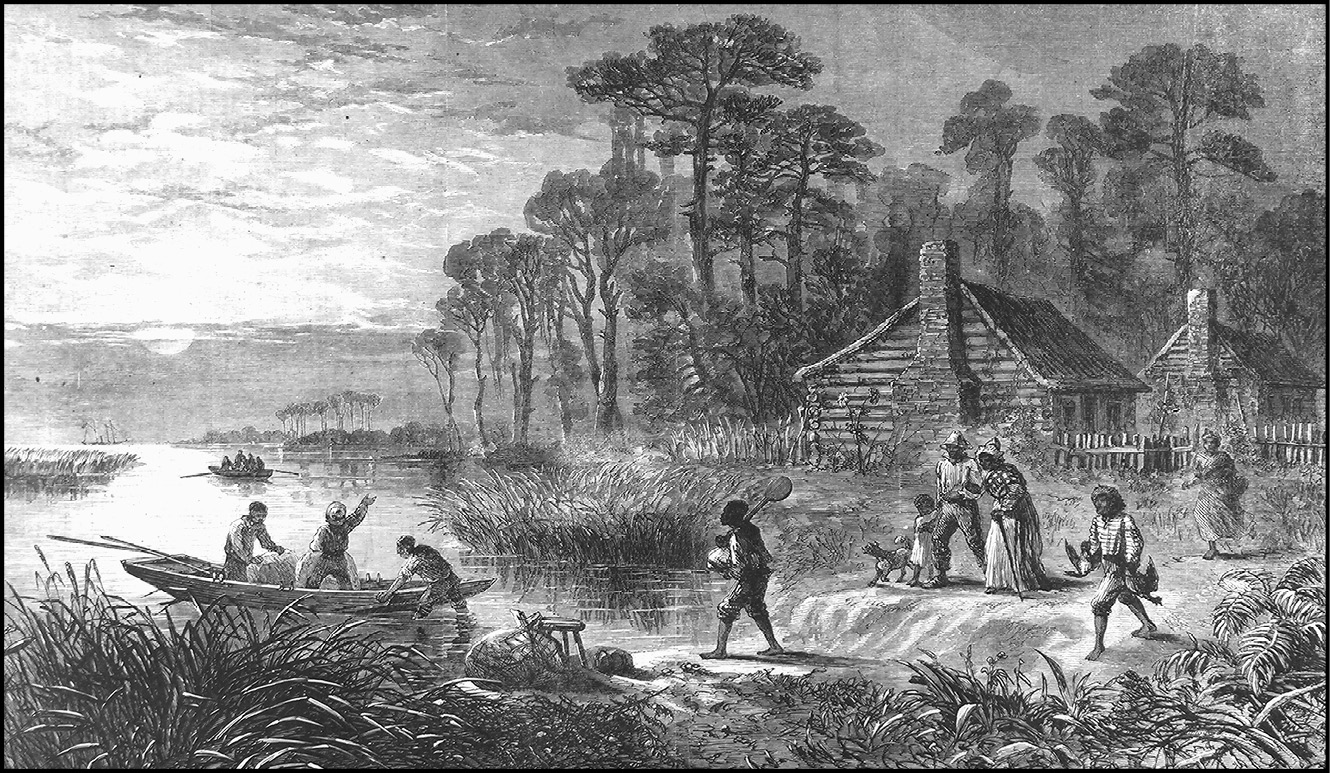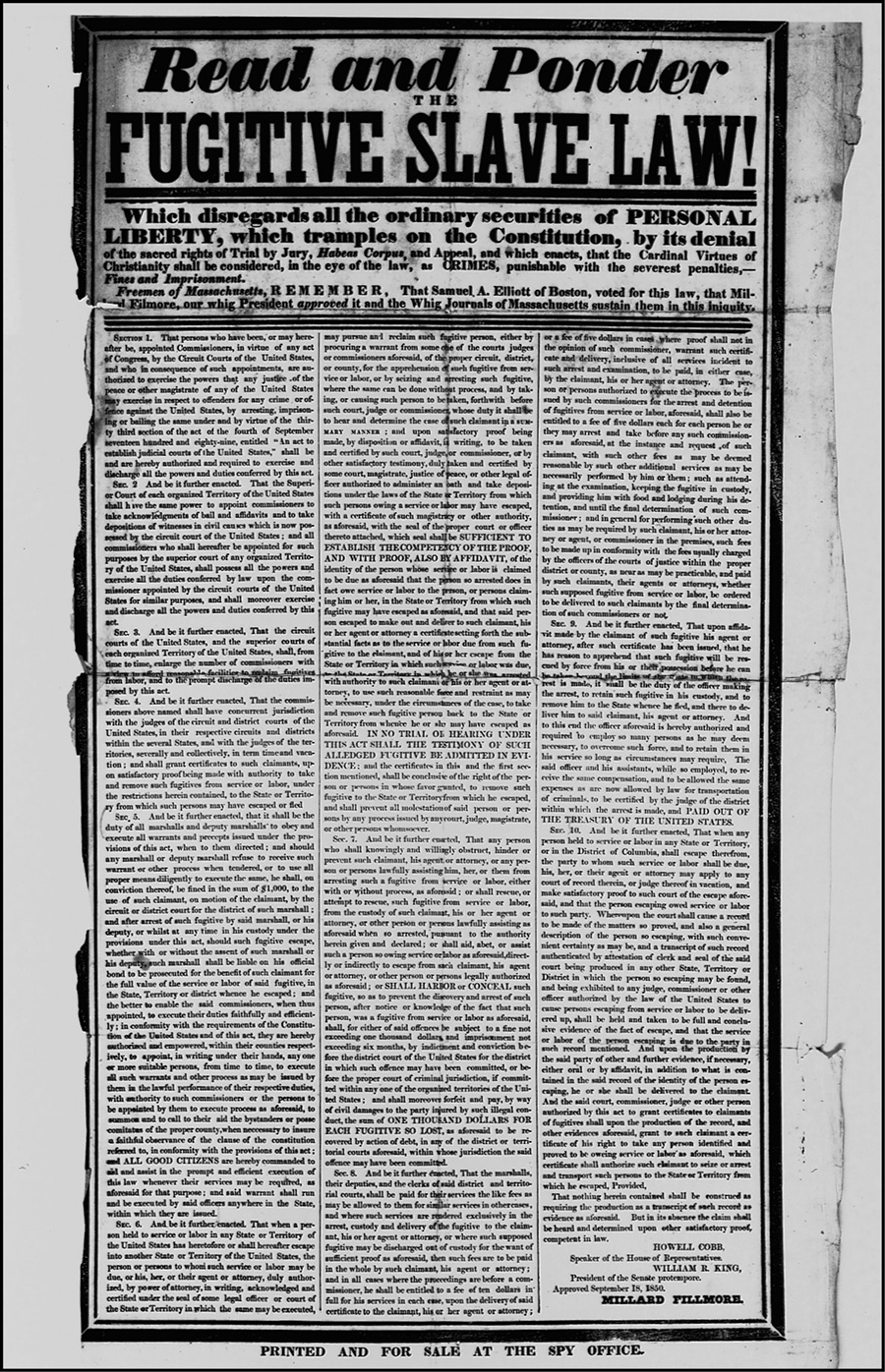FOREWORD
Enslaved black people in the Americas had been risking their lives trying to escape their bonds almost since the first African slaves arrived in . The final destination of most fugitives was the relative safety of northern states, where slavery had been banned. Some would travel farther north to the greater safety of Canada.
Enslaved people escaped by foot or any other type of transportation available.
Among the many fugitive slaves who reached freedom in this period was a determined young woman named Harriet Tubman. In September 1849, she left her husband and family in Dorchester County, Maryland, and fled north, probably with the assistance of agents on the Underground Railroad.
Work on the Underground Railroad grew more dangerous in 1850 when Congress passed a new Fugitive Slave Act. The Slave Act said that runaway slaves found in the North had to be returned to their owners. It also created new punishments for those who assisted fugitives.
The Fugitive Slave Act of 1850 became a major point of controversy after its passage by Congress.
But Harriet Tubman continued her work despite the increased danger. Beginning in 1851, she made several trips back to Maryland and Virginia to guide other fugitive slaves, including members of her family, north. In 1856, Tubman made three excursions south. The last, in October of that year, found Tubman finishing one rescue mission and about to return to dangerous territory to begin another rescue mission as a guide on the Underground Railroad.
Slave owners forced enslaved people to do many types of work, including harsh physical labor, such as picking cotton.
Joe Bailey
Talbot County, Maryland, September 20, 1856
Joe Bailey watched the two slaves haul timber into the shipyard and nodded his approval. Joe was a slave too, one of the 40 working in the shipyard and on the farm owned by their master, William Hughlett. But Joe was no ordinary slave. He was the foreman of the shipyard, a manager of other slaves. When the harvest was brought in from the fields in a few weeks, he would supervise that too. Joe took great pride in his privileged position. The other slaves looked up to him almost as if he were their second master. However, Hughlett didnt own Joe. Joes master had rented him out to Hughlett for the past six years.
As Joe mulled over these thoughts, his brother, Bill, who also worked for Hughlett, came up to him. Hows the boss man? Bill asked.
Arent you supposed to be down at the mill? Joe asked his brother.
The work theres all done, replied Bill. Thought Id come up and see if you needed me here.
Joe looked up and saw their master approaching on horseback. We dont need help, he said, but you could ask Mr. Hughlett what he needs doing.
Hughlett, a tall man with a graying mustache, rode up and reined in his horse. He ignored Bill and spoke directly to Joe. Things going smoothly up here, Joe? he asked.
As smooth as butter, Mr. Hughlett, replied his foreman.
Good, said Hughlett. Ive got some news that I think youre going to like to hear, Joe. But I cant tell you yet. In a few days this business will be wrapped up and then Ill have a surprise for you. Until then, keep up the good work.
Joe smiled. Hughlett cast a sideways glance at Bill and then rode off toward his house.
What was that all about? Bill asked his brother.
Joe grinned and rubbed his bald head. Sounds like I might be getting a promotion, he said.
Bill snorted. The only promotion that would mean anything would be if he freed you. And that would be some surprise.
Go on, replied Joe. I think youre just a bit jealous, Bill.
Why should I be jealous of a fool like you? Bill shot back.
And why am I a fool? Joe asked.
For trusting a white man, said his brother. Then he strode off. Joe watched him disappear along the banks of the nearby Choptank River.
Hes the fool, he thought to himself. Then he turned his thoughts to the surprise his master had in store for him and wondered what it could be.
Harriet Tubman
Seaford, Delaware, October 12, 1856
Harriet Tubman was feeling nervous. She had made the journey along the Underground Railroad plenty of times in the past few years. She had brought many small groups of slaves north to freedom, but this time was different. Because of the difficulties facing her, she had made the bold decision to travel farther south to throw the slave catchers off her scent. But now she had to travel north again, facing the same dangers of capture, but this time for a greater distance.
The second dilemma she faced was Tilly, the young, light-skinned slave who clung to her arm as they walked. Tilly was running away from a master who planned to force her into marriage with a male slave she did not love. Harriet intended to see Tilly reunited with her true love, a man Harriet had led to freedom on a previous mission. Now she and Tilly were walking to the train depot in Seaford. They would board a train bound for the town of Camden, Delaware, and then travel to Pennsylvania, a free state, where Tilly would be safe.
Suddenly a gruff, deep voice caused Harriet to stop in her tracks.
Hey, where are you women going? asked a mans voice.
Harriet felt Tillys grip on her arm tighten. She turned and saw a man standing nearby. Harriet recognized him as someone she had seen at the hotel they had stayed at the previous evening. She suspected he was a slave catcher, paid to capture runaways.
You gonna answer me? said the man.
Going to the train to go back to master, said Harriet in a calm voice.
He lets you ride on a train by yourself? said the slave catcher. Thats one trusting master you have.
Harriet Tubman, 1870
Harriet nodded. She could feel Tilly shaking as if she had a fever.
I think youre lying to me, said the man, drawing closer. You look to me like a couple of runaways.
Before the man could grab her arm, Harriet pulled a wrinkled paper from a pocket.
Whats that? said the slave catcher.
Pass from master, replied Harriet, as he snatched it from her hand. She watched his mouth curl into a frown as he read the pass. He thrust out his hand and Harriet took back the pass.
Good day, mister, Harriet said as they headed for the depot.
Is he gone, Moses? whispered Tilly, using Harriets nickname.
Just keep walking, replied Harriet, keeping her voice calm. Shed had close calls before on rescue missions, but this was one of the closest.


